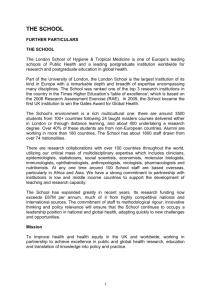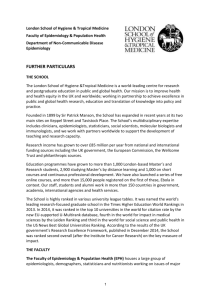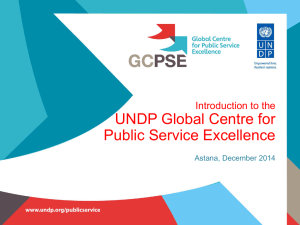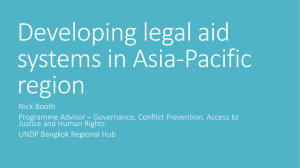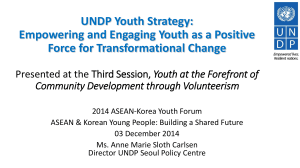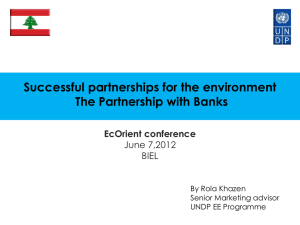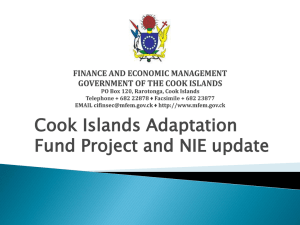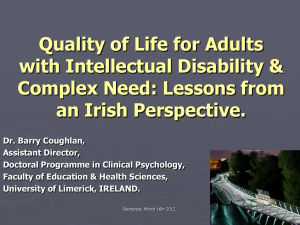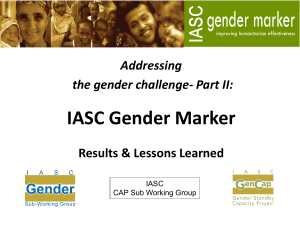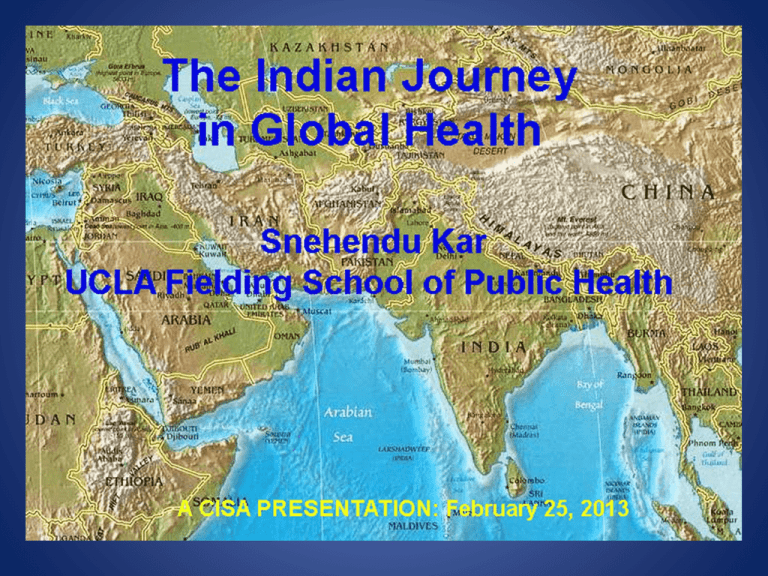
What is Public Health ?
PH is disease prevention and health promotion in communities through
population based research, and science based policies and interventions
The target of PH is “public” not individual “patients”
PH aims at science based “prevention” of health risks in populations; not
treatment of patients after diseases occur
PH requires active “ community participation”; not passive compliance
with medical regimen
PH requires multi-sectorial “public-private partnerships”
The 4 “Ps” of PH are : Public, Prevention, Participation , & Partnership
ETIOLOGICAL PARADIGMS
• Cosmic and supernatural causes ( e.g. witchcraft and “Karma)”
• “Miasma” and personal cleanness ( e.g. bad air germs )
• Genes, germs, Toxins, & Trauma (e.g. Infectious disease epidemics )
• Health behavior and Life-style (e.g. obesity, sex, substance abuse)
• Social Determinants and man-made disasters (e.g. poverty, disparity, war)
Selected Contributions of Indian Subcontinent to
Global Public Health*
1.
2.
3.
4.
5.
Sa nita tion s y s te m s in M e hrga rh (?) a nd Ha ra ppa civ iliza tions 7 00 0 BCE
Ay urv e da :Cha ra k a a nd Sus ura ta Sam hita s (Ve dic) 6 0 0 BCE to 1 0 0 CE
Yoga a nd M e dita tion (s inc e Pre -Vedic tra ditions )
Ashoka’s edicts (M ayura dynasty 3 rd CBC) on Universal Health care
Sm a ll Pox Va riola tion ( be fore Dr. Je nne r); re f of SP a nd “ge rm s ” in Ve dic e ra ( Ma dha ba’s
book “ Nida na ” in 8 t h ce ntury CE )
6.
7.
8.
9.
10.
Proto-de nta l s urge ry in M e he rga rh and Ha ra ppa
First universities in Nalanda and Taxila (4 ht Century BCE ) attract foreign scholars
The “ Cha tra m ” ne twok ( s he lter, food, wa te r, c linic s )
M a la ria re s e a rc h a nd control by Dr. Rola nd Ros s in Kolk ata Nobe l in 1 90 2
Bengal Famine Commission (1943) ;Sen’s1998 Nobel for pioneering work on “famine” ,
“ de v e lopm e nt a s fre edom ” & qua lity of life (QOL)
The IPPF founde d (Bom ba y 1 9 52 ) to prom ote wom e n’s re productiv e rights globally
11.
12.
13.
14.
15.
16.
Na tiona l He a lth Progra m s a nd RCA proje c ts with globa l univ e rsitie s & age nc ie s
Sen and Huq develop Human Development Indicators (UNDP/HDR)
M ic ro-e nte rpris e for be tte r QOL (Ta gore , SEWA, Gra m e e en - Yunus’ Nobe l in 2 00 6 )
Firs t World Confe re nc e by s e x work e rs for AIDS pre v e ntion in Kolk ata 2 00 9
Num e rous gra s s roots m ov e m e nts for be tte r ju s tic e, fre e dom, & be tte r QOL by wom e n,
opre s s e d a nd “ da lit”(unde rc las s ) popula tions
* India’s oral tradition means earliest innovations remain unwritten for thousands of years.
Epidemiological Transion
Global Causes of Death
Injuries
Communicable
diseases,
maternal and
perinatal
conditions, and
nutritional
deficiencies
9%
31%
60%
Noncommunicable
diseases
Source: WHO, World Health Report 2000—Health Systems: Improving Performance (Geneva: WHO,
2000).
7
8
© 2005 POPULATION REFERENCE BUREAU
United Nations Publications: ST/ESA/SER. a/306
THE PUBLIC HEALTH JOURNEY : FROM LOCAL TO GLOBAL INITIATIVES
I.MEDICAL AND SCIENTIFIC INNOVATIONS LEADING INFECTIOUS DISEASE EPIDEMICS
CONTROL (e.g. eradication of Smallpox, control of Malaria, TB, Polio, air and water bourn
diseases). EXTENSION OF MEDICAL INTERVENTIONS IN COMMUNITIES (Social medicine)
2. EMERGENCE OF PH RESEARCH, PH SCHOOLS , AND PROFESSIONALS ORGANIZATIONS
INCLUDING SOCIAL ACTION INITIATIVES BY NGOs/CBOs (BETWEEN WWI & WWII).
INCREASED INVOLVEMENT OF SOCIAL SCIENCES IN PH AND “ECOLOGICAL”
PARADIGMS FOR PRIMARY PREVENTION INTERVENTIONS IN COMMUNITIES
3. EMERGENCE OF MULTINATIONAL AND GLOBAL PUBLIC HEALTH ORGANIZATIONS
(e.g. WHO, UNICEF, UNDP, IMF, WORLD BANK ) INCLUDING PUBLIC HEALTH
PHILANTHROPHY, AND SOCIAL ACTION MOVEMENTS ESPECIALLY AFTER WWII
4. PUBLIC-PRIVATE PARTNERSHIPS FOR DISEASE PREVENTION AND HEALTH PROMOTION,
MICRO-ENTERPRISE MOVEMENTS, AND COMMUNITY EMPOWERMENT
Ten Great Public Health Achievements– United States, 1900-1999
Vaccination
Motor-vehicle safety
Safer workplaces
Control of infectious diseases
Decline in deaths from coronary heart disease and stroke
Safer and healthier foods
Healthier mothers and babies
Family planning
Fluoridation of drinking water
Recognition of tobacco use as a health hazard
http://www.cdc.gov/mmwr/preview/mmwrhtml/00056796.htm
Comparison of Kerala & All India
Kerala
All-India
Death Rate/1000 (1998)
6.4
9.0
Rural Birth Rate(1998)
18.3
28.0
16
72
Life Expectancy (1993)
66.5
61.5
Literacy Rate (1991)
90.59
52.11
Female Literacy Rate(1991)
Mean age at marriage(F)
86.17
22.3
19.43
19.3
Per capita Income(1995-96)
Doctor-Population Ratio
8324
1:7213
11649
1:2148
IMR(1998)
Patricia Rosenfield/Rockefeller Study
Indian One Hundred Rupees
Stated in 17 Languages
The Public Health Foundation of India (PHFI)
www.phfi.org/about-us/about-phfi
Established in 2006
The Public Health Foundation of India (PHFI) is a response to redress the limited institutional capacity in India for strengthening
training, research and policy development in the area of Public Health. It is a public private partnership that has collaboratively
evolved through consultations with multiple constituencies including Indian and international academia, state and central
governments, multi & bilateral agencies and civil society groups.
Structured as an independent foundation, PHFI adopts a broad, integrative approach to public health, tailoring its endeavours to
Indian conditions and bearing relevance to countries facing similar challenges and concerns. The PHFI focuses on broad
dimensions of public health that encompass promotive, preventive and therapeutic services (many of which are frequently lost
sight of in policy planning, as well as in popular understanding).
Main activities
The PHFI is working towards building public health capacity in India by:
Establishing 5 - 7 new institutes of public health over the next 6 years;
Assisting the growth of existing public health training institutions/departments and facilitating their evolution into major
institutes of public health
Establishing a strong national research network of public health and allied institutions which would undertake policy and
programme relevant research that will advance public health goals in prioritized areas - with suitable international partnerships
where useful and appropriate;
Engaging public health expertise to collectively undertake analytical work for generating policy recommendations related to
public health action, in not only the health sector but also in all other sectors which impact upon health of
people, and
developing a vigorous advocacy platform to effectively communicate these recommendations to
policy makers and other
relevant stake holder groups (including civil society organizations which represent the interests of people’s health); and
Establishing an independent accreditation body for degrees in public health which are awarded by training institutions across
India.
1.1111
k1X
X
X m
X
HIGH LEVEL EXPERT COMMITTEE ON UNIVERSAL HEALTH CARE (India)
http://planningcommission.nic.in/reports/genrep/UHC_ExecSummary.pdf
Free universal health care to all (no cash exchanged at point of delivery)
Fully federal tax supported
Federal responsibility – states responsible for service delivery
Options for additional care at personal cost
Integrate the AYUSH System (CAM) in Universal Health Care
The AYUSH System
1. Ayurveda
2.Yoga
3. Unani
4. Siddha (Naturopathy)
5. Homeopathy
CORE REFERENCES
Am. PH Assoc (APHA)
www.apha.org
Assoc SPHs (ASPH)
http://asph.org/
The Alma-Ata Declaration (1978), WHO/UNICEF
http://www.paho.org/english/dd/pin/alma-ata_declaration.htm
British Museum
http://www.ancientindia.co.uk/
Calcutta Declaration (1999) http://en.wikipedia.org/wiki/User:Prashanthns/Calcutta_Declaration
Ottawa Charter
http://www.who.int/healthpromotion/conferences/previous/ottawa/en/
High Level Expert Committee on Universal Health Care in India 2012
http://planningcommission.nic.in/reports/genrep/UHC_ExecSummary.pdf
http://www.scribd.com/doc/83282216/12th-Plan-Health-Final-Report-From-Steering-Committee
PHFI
www.phfi.org/about-us/about-phfi
National Geographic ( 2007 )Anita Dalal & Monica Smith - Consultant ), Ancient India : Archeology Unlocks the Secrets of India’s Past
Kar, R obin (2012), Western Legal Prehistory, University of Illinois Law Review, vol. 2012, no. 5, pp. 1499-1702 (2012).
Kar, S.B. (2000), Empowerment of Women for Health and Welfare Systems Development, Background paper for the First
on Women and Health, April 5-7, 2000, Awaji Island, WHO Kobe Center, Kobe, Japan
Ministry of Health and Welfare, (India) http://mohfw.nic.in/
UCLA Fielding School of Public Health
UNDP/ HDI
http://ph.ucla.edu/
http://hdr.undp.org/en/humandev/
http://hdr.undp.org/en/statistics/hdi/
Sen, Amartya (1999), Development as Freedom, Random House (Also: The Argumentative Indian , Viking , 2006)
WHO 1948
http://www.who.int/about/history/en/index.html
Wolpert, S (2008) A New History of India (Eight Edition) , Oxford University Press
Witzel , Michael (2013), Origins of Worlds Mythologies, Oxford University Press
International Meeting

